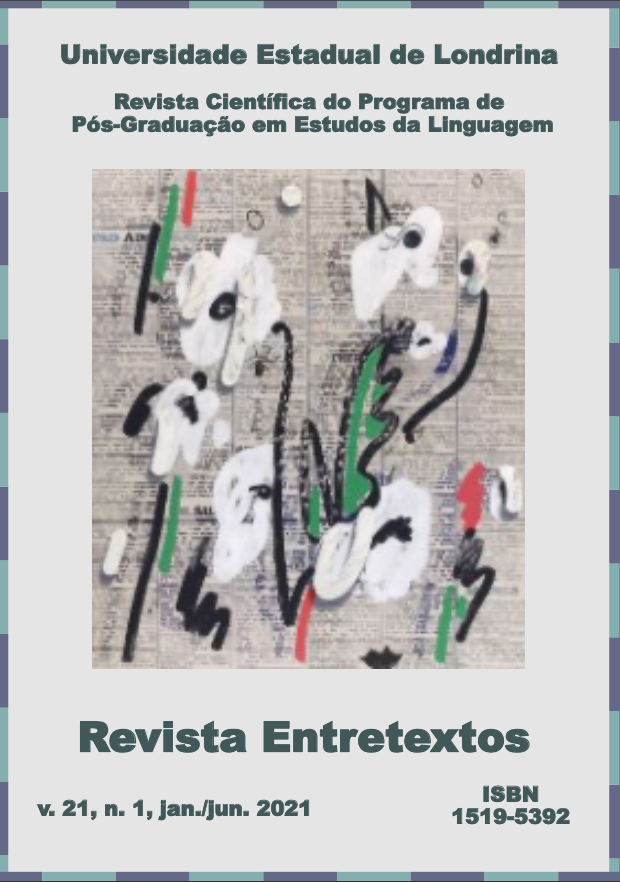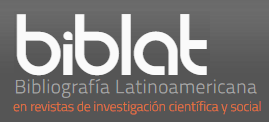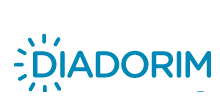O açúcar em Rosa: Metáfora, deslizamento de sentidos e condições de pro- dução
DOI:
https://doi.org/10.5433/1519-5392.2021v21n1p159Palavras-chave:
Metáfora, Análise do Discurso, Guimarães Rosa.Resumo
O objetivo deste artigo é analisar os deslizamentos de sentidos possíveis da metáfora “O açúcar é um pozinho branco que dá muito mau gosto ao café, quando não se lho põe”, de João Guimarães Rosa, considerando as suas diferentes condições de produção. Assim, busca vislumbrar como essa metáfora esconde dizeres ideológicos, que podem ser desvendados com uma análise minuciosa a partir das condições de produção e os efeitos de sentido presentes e escondidos, o que revela a necessidade de desvelamento, a fim de (re)conhecer seus mecanismos. O nível do acontecimento vem à tona no estudo dessa metáfora, como trecho de duas versões diferentes: a primeira dentro de uma coluna de jornal, em 1954, que passou por alterações e se tornou a segunda, com o prefácio “Aletria e hermenêutica”, do livro Tutaméia, de 1967. Para fundamentar a análise, utilizamos o referencial teórico da Análise do Discurso de linha francesa, em especial Michel Pêcheux e Eni Puccinelli Orlandi, assim como alguns historiadores e críticos literários. Logo, verificamos como a historicidade está/se faz presente em uma metáfora de Guimarães Rosa, contribuido para os seus deslizamentos de sentidos, com um diálogo entre estrutura e acontecimento.
Downloads
Referências
BRAIT, Beth. Literatura comparada – Guimarães Rosa: seleção de textos, notas, estudos biográfico, histórico e crítico e exercícios. São Paulo: Abril Educação, 1982.
CANDIDO, Antonio. A literatura e a formação do homem. Ciência e Cultura, Campinas, v. 24, n. 9, set. 1972.
D’ARAÚJO, Maria Celina. O segundo governo Vargas 1951-1954: democracia, partidos e crise política. 2. ed. São Paulo: Ática, 1992.
GADET, Française; HAK, Tony. Por uma análise automática do discurso: introdução ao pensamento de M. Pêcheux. Campinas: Editora da Unicamp, 2001.
GALVÃO, Walnice Nogueira. Rapsodo do sertão: da lexicogênese à mitopoese. Cadernos de Literatura Brasileira, São Paulo, n. 21-22, p. 144-186, dez. 2006.
MAZIÈRE, Francine. A análise do discurso: história e práticas. Tradução de Marcos Marcionilo. São Paulo: Parábola Editorial, 2007.
MUSSALIM, Fernanda. Análise do discurso. In: MUSSALIM, Fernanda; BENTES, Anna Christina (org.). Introdução à linguística: domínios e fronteiras. 3. ed. São Paulo: Cortez, 2003. v. 2, p. 101-142.
ORLANDI, Eni Puccinelli. Análise de discurso. In: LAGAZZI-RODRIGUES, Suzy; ORLANDI, Eni Puccinelli (org.). Introdução às ciências da linguagem: discurso e textualidade. Campinas, SP: Pontes, 2006.
ORLANDI, Eni Puccinelli. As formas do silêncio: no movimento de sentidos. Campinas: Editora da Unicamp, 1992.
ORLANDI, Eni Puccinelli. As formas do silêncio. Campinas: Editora da Unicamp, 2007.
ORLANDI, Eni Puccinelli. Discurso e leitura. São Paulo: Cortez, 1993.
ORLANDI, Eni Puccinelli. Discurso e texto: formulação e circulação dos sentidos. Campinas, SP: Pontes, 2001.
ORLANDI, Eni Puccinelli. Interpretação: autoria, leitura e efeitos do trabalho simbólico. Petrópolis, RJ: Vozes, 1996.
ORLANDI, Eni Puccinelli. Silêncio e implícito (produzindo a monofonia). In: GUIMARÃES, Eduardo (org.). História e sentido na linguagem. Campinas, SP: Pontes, 1989.
PÊCHEUX, Michel. Delimitações, inversões, deslocamentos. Cadernos de Estudos Linguísticos, Campinas, n. 19, p. 7-24, jul./dez. 1990.
PÊCHEUX, Michel. O discurso: estrutura ou acontecimento. Campinas: Pontes, 1995.
PÊCHEUX, Michel. Semântica e discurso: Uma crítica à afirmação do óbvio. Campinas: Editora Pontes, 1988.
PÊCHEUX, Michel. Semântica e discurso: uma crítica à afirmação do óbvio. Campinas: Pontes, 1975.
REZENDE, Maria José. A ditadura militar no Brasil: repressão e pretensão de legitimidade: 1964-1984. Londrina: Eduel, 2013.
ROSA, João Guimarães. Tutaméia (terceiras estórias). Rio de Janeiro: Nova Fronteira, 1967.
Downloads
Publicado
Como Citar
Edição
Seção
Licença
Entretextos adota a Licença Creative Commons Attribution 4.0 International, portanto, os direitos autorais relativos aos artigos publicados são do/s autor/es.
Sob essa licença é possível: Compartilhar - copiar e redistribuir o material em qualquer suporte ou formato. Adaptar - remixar, transformar, e criar a partir do material, atribuindo o devido crédito e prover um link para a licença e indicar se mudanças foram feitas.





















